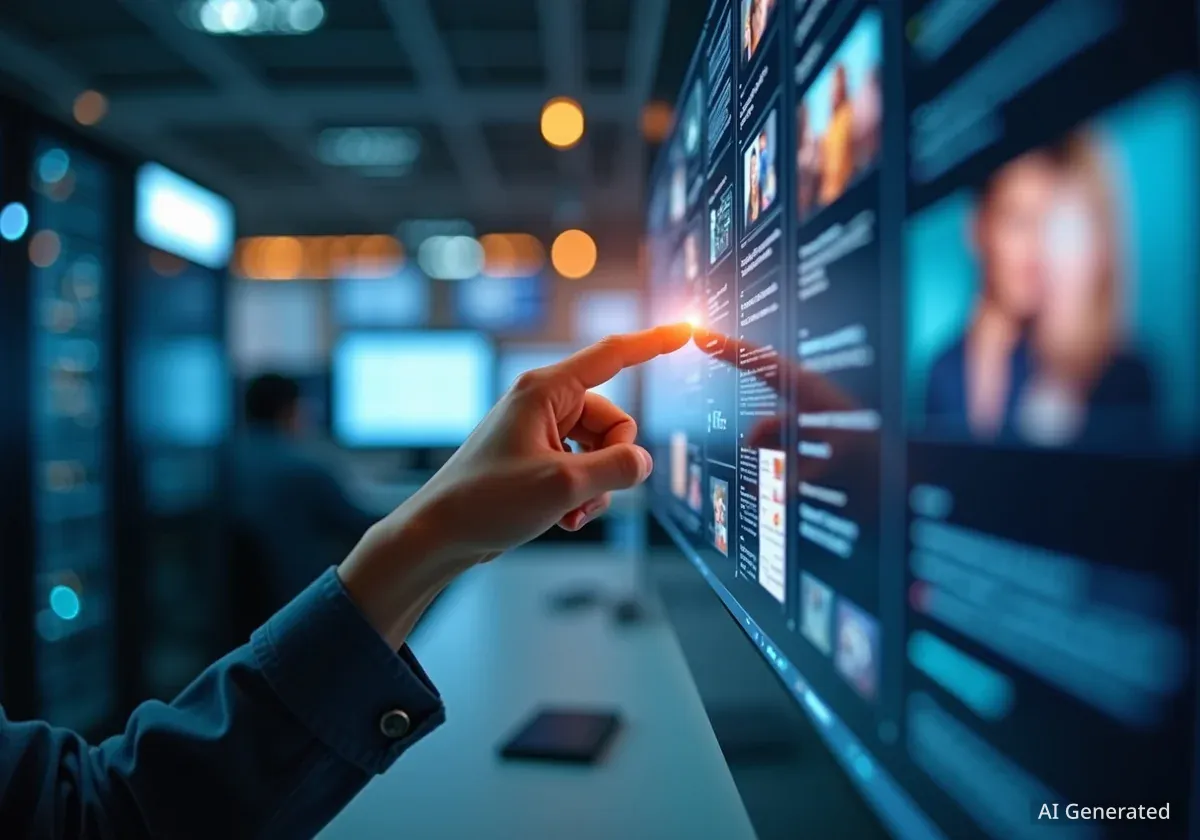Google has introduced a new artificial intelligence tool called Mixboard, designed for creating digital mood boards from simple text prompts. The software, now available as a public beta in the United States through Google Labs, allows users to generate and refine visual concepts without needing an existing collection of images.
This new service places Google in direct competition with established visual discovery platforms, most notably Pinterest, which offers a similar collage-making feature. Mixboard leverages Google's advanced image generation technology to provide a new way for users to brainstorm creative projects.
Key Takeaways
- Google has released Mixboard, an AI-powered tool for creating mood boards.
- The service generates images from text prompts using Google's Nano Banana image model.
- Mixboard is currently available as a public beta for users in the United States via Google Labs.
- The tool competes with Pinterest's popular collage and mood board features.
Introducing Mixboard: A New Approach to Visual Brainstorming
Google's latest AI project, Mixboard, offers a streamlined method for creating visual collections known as mood boards. Unlike traditional tools that require users to gather and arrange existing images, Mixboard starts with a user's idea expressed through text.
A user can simply type a description, such as "modern coastal living room design," and the AI will generate a board of corresponding images. This approach aims to lower the barrier to entry for creative projects, making it accessible to those who may not have a curated library of visual inspiration.
For users who prefer a starting point, Mixboard also provides pre-populated boards that can be edited and customized. The service is designed for a range of applications, including brainstorming home decor ideas, planning event themes, or conceptualizing DIY projects.
What is Google Labs?
Google Labs is a platform where Google showcases early-stage experiments and allows users to test new products and provide feedback. Projects in Labs are often in a beta phase, meaning they are still under development and may change based on user input before a potential wider release.
The Technology Powering Mixboard
At the core of Mixboard is a new image editing model from Google called Nano Banana. This technology has been noted for its ability to handle complex editing requests and produce realistic, high-quality images. By integrating Nano Banana, Google is making its latest AI advancements available in a practical, user-facing product.
Once an initial set of images is generated, users have several options for refinement. They can instruct the AI to make specific edits, combine different images, or generate variations of a particular image using a "more like this" function. This interactive process allows for a high degree of customization.
The AI can also generate descriptive text based on the visual content of a user's board, adding another layer of utility for organizing creative thoughts. This feature helps bridge the gap between visual ideas and written plans.
Google's AI Momentum
The launch of Mixboard follows other successful AI rollouts from the company. According to reports, Google's Gemini AI application recently surpassed ChatGPT in the U.S. App Store rankings, indicating strong consumer interest in Google's artificial intelligence products.
Entering a Competitive Creative Space
Mixboard enters a market with established players and a clear user demand for digital collage tools. Pinterest has found significant success in this area, particularly with its standalone collage-making app, Shuffles, which gained viral popularity among Gen Z users on platforms like TikTok. The features from Shuffles were later integrated directly into the main Pinterest app.
The digital mood board space has also attracted various startups. While some, like Landing, have since closed, others like the AI-powered creative app Verse have explored similar concepts. The trend is also present in e-commerce, with platforms like Depop recently launching a collage tool to help users style and market fashion items.
Google's entry suggests the company sees a significant opportunity to capture a share of the market by leveraging its powerful AI image generation capabilities. The focus on text-to-image creation is a key differentiator from Pinterest's model, which is primarily based on curating existing content (Pins).
How to Access Mixboard
For those interested in trying the new tool, Mixboard is accessible to users in the United States. The public beta can be joined by visiting the official Google Labs website for the project.
Google has also established a community for Mixboard users on Discord. This platform provides a space for users to share their creations, exchange tips, and provide direct feedback to the development team during the beta testing phase.
The availability is currently limited to the U.S., but as with many Google Labs projects, it may see a wider release in the future depending on its performance and user reception during this initial phase.





